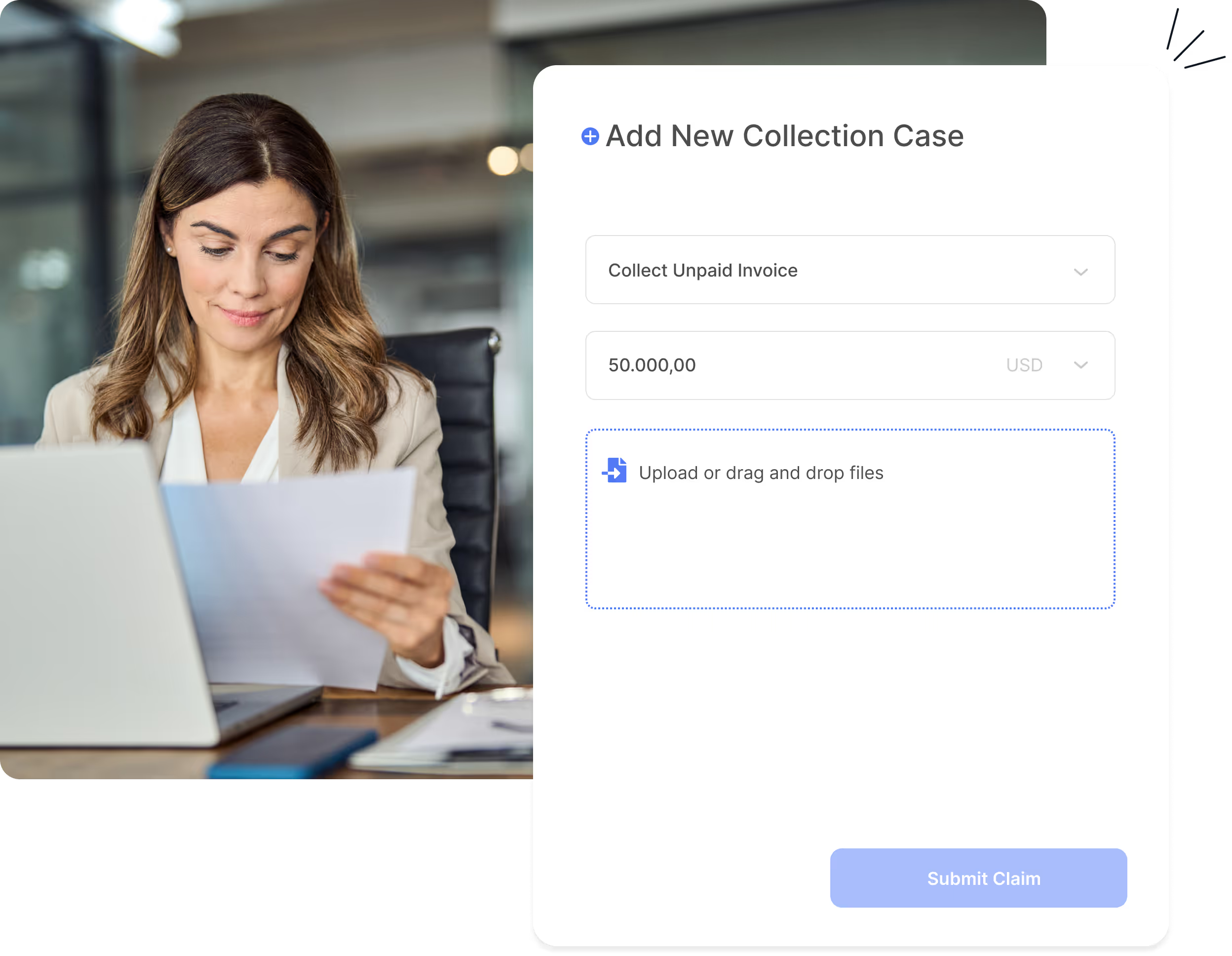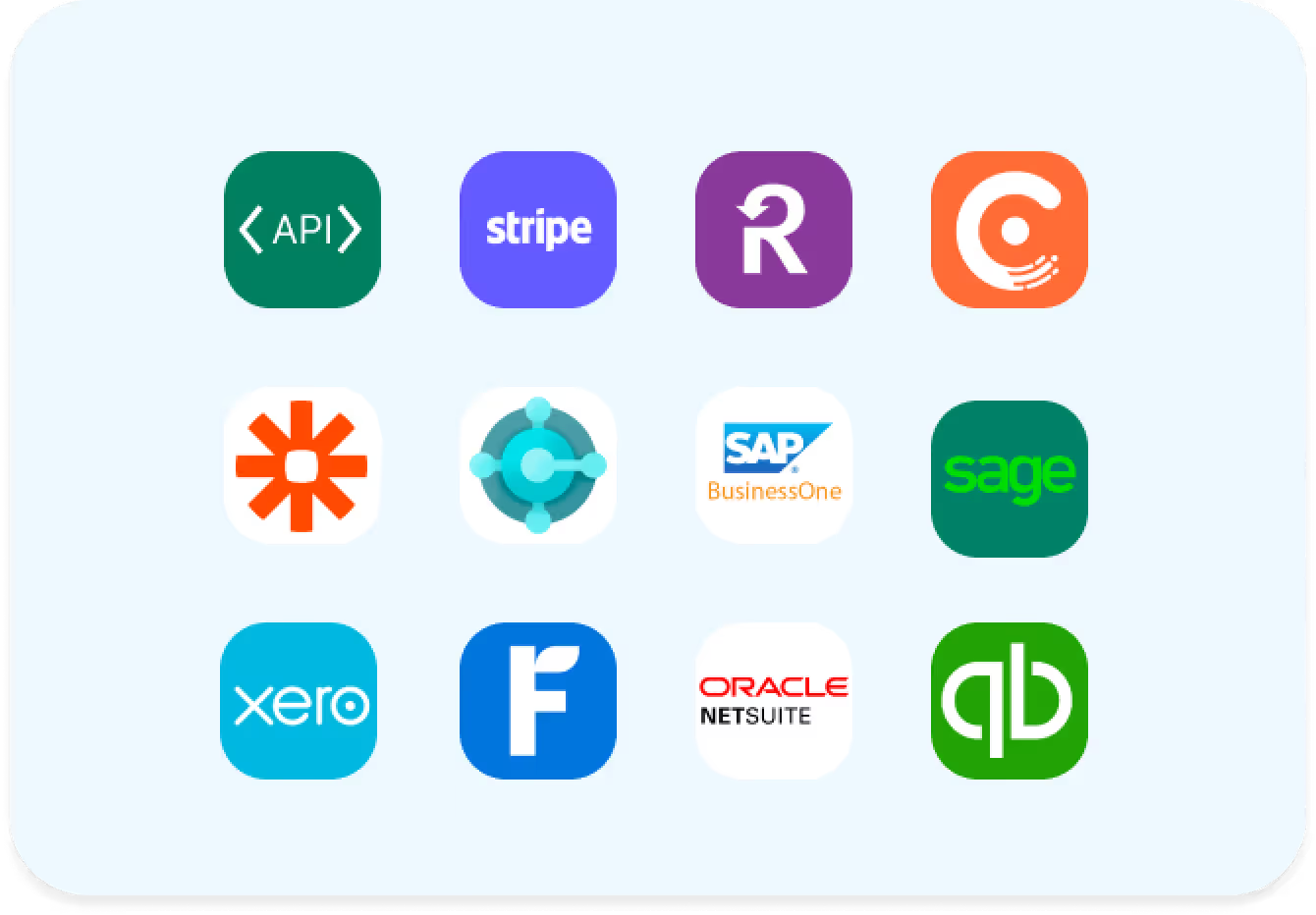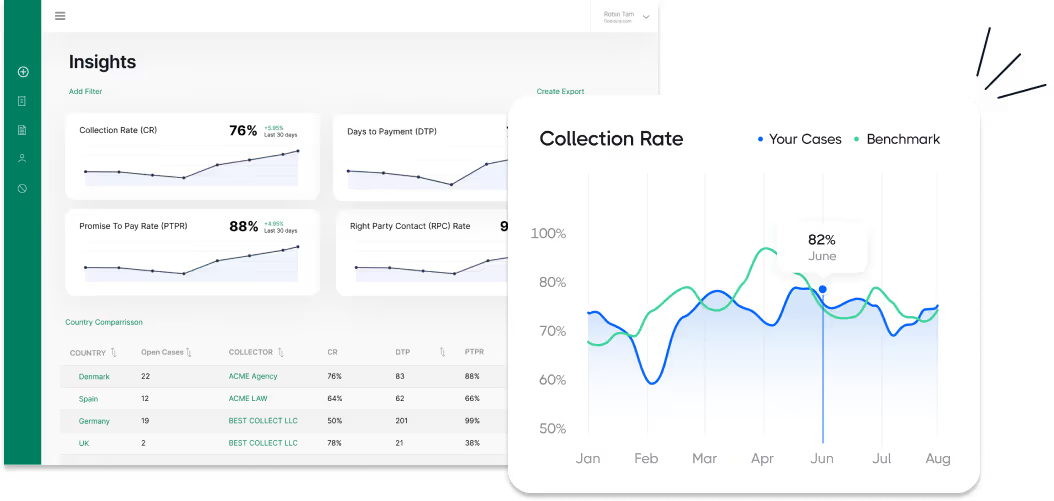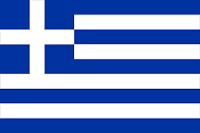Top-Rated Debt Collection Agency in Greenland
Your trusted Debt Collection Agency in Greenland, dedicated to swift, reliable recoveries. No upfront fees! Peek into our expansive guide for inclusive local collection practices.






The ultimate guide about debt collection in Greenland
Why you can trust this guide
At Debitura, we uphold the highest standards of impartiality and precision to bring you comprehensive guides on international debt collection. Our editorial team boasts over a decade of specialized experience in this domain.
Questions or feedback? Email us at contact@debitura.com — we update this guide based on your input.
Debitura By the Numbers:
- 10+ years focused on international debt collection
- 100+ local attorneys in our partner network
- $100M+ recovered for clients in the last 18 months
- 4.97/5 average rating from 600+ client reviews
Expert-led, locally validated
Written by Robin Tam (16 years in global B2B debt recovery). Every page is reviewed by top local attorneys to ensure legal accuracy and practical steps you can use.
Contributing local experts:
Last updated:
Dealing with debt collection in Greenland can be challenging. Our guide with Debitura provides you with the right blend of local insight and international expertise to simplify your debt recovery tasks, effectively gearing you up for this financial venture.
Unraveling The Fundamental Actors of Greenland's Debt Recovery
Charting the labyrinthine landscape of Greenland's debt recovery, a lucid comprehension of the integral roles that respective actors play is essential. Debt collectors, bailiffs, and lawyers contribute differently yet flawlessly towards debt recovery while strictly adhering to Greenland's stringent legal provisions.
Debt Collection Agencies in Greenland
In Greenland, debt collection agencies operate as crucial intermediaries in the debt recovery process, especially before any legal measures are considered. These agencies are primarily involved when creditors need professional assistance in recovering outstanding debts, leveraging various strategies like direct communication with debtors through emails, phone calls, and letters. These activities are strictly regulated to ensure ethical practices and consumer rights protection, disallowing any form of abusive behavior. Such agencies are pivotal for creditors seeking an amicable resolution and play a significant role in managing amicable collection efforts, making them a vital resource before escalating matters to judicial proceedings. Despite their diligent pursuit of debt recovery, it's important to note these agencies are limited by regulation to pre-legal actions, highlighting their importance in the initial stage of debt collection but also their limitations without the option of direct legal enforcement.
Lawyers in Greenland
In Greenland, engaging a lawyer becomes crucial for creditors when debt disputes escalate to a point where judicial intervention is necessary. Lawyers play a critical role in the process, especially for debts exceeding DKK 100,000, where their involvement is mandatory to file a claim form with the court and navigate through the legal proceedings. The expertise of lawyers is indispensable in drafting and filing necessary legal documents, representing the creditor’s interests in court, and ensuring the compliance with Greenland's debt collection laws. Their comprehensive understanding of the local legal system aids in managing the judicial collection phase efficiently, which includes initiating lawsuits after amicable collection efforts have failed, exchanging evidences and opinions prior to hearings, and representing creditors during court proceedings. Ultimately, lawyers provide the necessary legal arsenal to enforce debt recovery through court judgments and subsequent enforcement actions, making them pivotal to the success of complex debt recovery efforts in Greenland.
The Role of Bailiffs in Greenland
In Greenland, bailiffs are pivotal to the debt collection process, enforcing legal judgments such as asset seizures and the implementation of court orders. Their role is activated when a debtor disregards a court's verdict mandating payment. Before a bailiff can intervene, a creditor must obtain a court judgment. This involves external legal assistance, especially for debts exceeding DKK 100,000, to file a claim and secure a judgment, which depending on the debt size, incurs specific costs and could take around six to twelve months on average. Once the judgment is in place and the debtor still fails to fulfill their obligations, the case transitions to the bailiff's court for execution. Enforcement proceedings managed by a bailiff's court may only proceed with such a judgment or with a written acknowledgment of debt. The bailiff assesses if the debtor possesses any securable assets, seeks to establish payment arrangements, and may face delays if the debtor evades the process.
Understanding the Legal Framework for Debt Collection in Greenland
Recovering debts in Greenland mandates comprehensive knowledge of the intricate legal terrain. Observance of these laws guarantees efficient debt recovery and promotes fairness, fostering a trustworthy and ethical atmosphere in business operations.
The Regulatory Environment and Civil Court System in Greenland
Greenland's civil court system is a pivotal component of its legal framework, underpinning the enforcement of civil rights and resolution of disputes.
- District Courts (Kredsretter): As the foundation of Greenland's judicial system, the District Courts are the first level where most civil cases are initiated. They handle a wide array of cases, including small claims, contracts, family law, and inheritance issues.
- High Court of Greenland (Gronlands Landsret): Acts as the intermediate appellate court. It reviews appeals from the District Courts. However, in certain cases, it can also function as a court of first instance, particularly in more significant civil cases.
- Denmark's Supreme Court (Hojesteret): Represents the apex of the civil court system hierarchy. As Greenland is a part of the Kingdom of Denmark, it shares the Supreme Court with Denmark. It handles appeals against judgments from the High Court of Greenland, serving as the final stage for legal appeals in the Greenlandic judicial system.
In conclusion, Greenland's civil court system, embedded within the broader Danish legal framework, is designed to ensure that justice is both accessible and efficiently administered. This hierarchal structure promotes a balanced approach to legal resolutions, from community-level disputes to issues of national significance.
Key Legislation Impacting Debt Collection in Greenland
Understanding the legal landscape in Greenland is crucial for effective debt collection practices. The region is governed by an array of legislation targeting debt recovery, consumer protection, and insolvency procedures.
- The Greenland Working Environment Act (Act No. 1048 of 26 October 2005) - Addresses working conditions and safety, indirectly affecting debt recovery practices in business environments.
- Data Protection Regulations - A framework that mandates transparency and user consent in the use of personal data, critical for the collection process.
- Inatsisartut Laws - Specifically targeted at financial practices and consumer protection, they outline the legal foundations for debt collection methods and creditor-debtor relations in Greenland.
Adhering to these legal foundations ensures a smooth debt collection process while respecting the rights of all parties involved. It's essential for creditors to navigate these laws with professionalism and due diligence to maintain fairness and efficiency in debt recovery operations in Greenland.
Consumer Protection from Unfair Collection Practices in Greenland
In Greenland, protecting consumers against unfair debt collection practices is a critical aspect of maintaining financial fairness and privacy. Here are the pivotal regulations and principles safeguarding consumers:
- Respect for Privacy: The collection and sharing of debtor information adhere to strict privacy regulations, ensuring confidentiality and respect for personal data.
- Clear Communication: Debtors must be clearly informed about their debts, the collection process, and their rights, promoting transparency and understanding.
- Consent for Non-essential Data Collection: In line with GDPR guidelines, Greenlandic debt collection entities must obtain consent for non-essential cookies and data collection, enhancing consumer control over personal information.
- Prohibition of Abusive Practices: Actions that unduly harass or intimidate the debtor, or that are deceitful in recovering debts, are strictly prohibited.
- Advocacy and Support: Organizations like the Inuit Pisinnaatitaaffii Institute advocate for fair treatment in the debt collection process, particularly focusing on vulnerable groups such as Greenlandic women.
Greenland's approach to consumer protection in debt collection emphasizes respect for individual rights, informed consent, and ethical practices. These measures protect consumers from unfair collection tactics while ensuring the integrity of the debt recovery process.
Understanding Amicable Debt Collection in Greenland
Encapsulating the concept of amicable, or pre-legal, debt collection in Greenland, this section plots the simplified, expedited roadmap to resolving debts sans legal proceedings. Enlisting the help of debt collection agencies often eases the process, offering a swift and streamlined approach.
- Greenlandic Debt Collection Office's Role: Ensures compliance with local laws in debt recovery actions.
- Collaboration Between Greenland and Denmark: Facilitates cross-jurisdictional debt collection processes.
- Privacy and Data Protection Laws: Strict regulations protect debtor information during collection.
- Role of Financial Institutions: Banks like GrønlandsBANKEN are instrumental in the debt recovery process.
- Consumer Protection Emphasis: Cultural sensitivity and rights advocacy are central in the collection process.
- Comprehensive Use of Data Analysis: Employs detailed analysis to inform debt collection strategies.
- Amicable Debt Recovery Approach: Prefers out-of-court settlements as the primary collection method.
- Transitioning to Judicial Debt Recovery: Judicial proceedings are a next step if amicable efforts fail.
- Statute of Limitations and Interest Rates: Legal parameters influencing the collection strategy and debtor costs.
- Costs and Fees in Amicable Collection: Regulated fees and interest rates applicable for late payments.
Navigating Amicable Debt Collection in Greenland
In Greenland, amicable debt collection represents a harmonious approach to resolving outstanding debts, where mutual respect and understanding between creditor and debtor are paramount. This strategy is rooted in comprehension of the local cultural and demographic landscape, recognizing the unique aspects of Greenland's population dynamics. Given that a significant portion of the population resides in major towns such as Nuuk, Sisimiut, Ilulissat, and Qaqortoq, local approaches and direct contact often facilitate effective debt recovery.
For international creditors, understanding these nuances is vital. Initiating amicable debt collection in Greenland through trusted agencies like Debitura, with a decade of localized experience, significantly enhances the chances of successful recovery. The process begins with precision in identifying the debtor’s circumstances and employing an empathetic communication strategy tailored to their specific situation.
The Role of Culture in Amicable Debt Recovery
The effectiveness of amicable collection in Greenland is also influenced by cultural sensitivities. The emphasis on respect and understanding within the Inuit culture supports a negotiation-based approach. This resonates with the purpose of amicable debt collection – to foster a positive dialogue focused on finding mutually beneficial resolutions without having to navigate the complexities of legal proceedings. Debitura’s approach, deeply ingrained with an understanding of local customs and respectful communication, results in higher rates of debt recovery.
Benefits and Transitioning Phases
The amicable method saves costs and preserves business relationships, proving advantageous for both creditors and debtors. For debtors, especially in a closely-knit community, this method facilitates manageable repayment terms while honoring their dignity and financial circumstances. Nonetheless, should circumstances require, the transition towards legal collection is handled with the utmost consideration, ensuring all amicable avenues have been thoroughly explored first.
The decision to escalate to legal action is approached with caution, emphasizing the need for a definitive resolution after evaluating the debtor's response and willingness to settle.
Debitura’s Amicable Debt Collection Framework in Greenland
Choose Debitura for a no-success, no-fee amicable debt collection service in Greenland. Our approach guarantees value, combining local insights with international expertise. The process, usually spanning 2-3 months, involves minimal upfront costs, with fees calculated based on successful recovery only.
- Signing Up: Begin with no upfront costs by creating an account with Debitura.
- Claim Submission: Upload your claim details, review the success fee, and initiate the recovery process.
- Monitoring Progress: Track your case’s progress via the Debitura dashboard, benefiting from transparent communication and updates.
- Evaluating Next Steps: In unresolved cases, Debitura assists in evaluating potential legal actions, offering guidance on proceeding with legal avenues.
Amicable debt collection in Greenland requires a blend of professional strategy and deep respect for local norms, ensuring that solutions are both effective and culturally sensitive. Debitura, with unparalleled expertise in Greenland’s unique landscape, stands as your ideal partner in navigating these waters.
Understanding Greenland's Judicial Debt Collection
When friendly approaches to claim recovery fail, the legal pathway for debt collection becomes the next course of action. Known as judicial debt collection, this necessitates obtaining a court order and potentially legal assistance. This introduction provides a focused look at Greenland's specific process of judicial debt collection.
- Greenlandic Court System: Judicial debt collection falls under Greenland's court, aligned with the Danish judiciary system.
- Greenlandic Debt Collection Office: Manages debt collection activities, ensuring compliance with local laws and ethical practices.
- Legal Framework: Specific laws regulate permissible debt collection methods, with a strong influence from Danish law.
- Consumer Protection: Historical advocacy for fair collection practices shows a commitment to protecting consumer rights.
- Legal Proceedings: Formal channels and legal actions involve structured processes in compliance with Inatsisartut laws.
- Data Protection: Debt collection must respect privacy laws, including GDPR, through lawful personal data handling.
- Use of Technology: Digital platforms play an increasing role in managing transactions and debt collection information.
- Online Consent: Transparency and lawful interactions, including debtor communications, are emphasized via consent mechanisms.
- Small Claims Procedures: Greenland likely has simplified processes for less complex cases, drawing from Danish practices.
- Ethical Practices: Legal compliance and ethics are paramount in Greenlandic debt collection, with an emphasis on respect for individuals.
Shifting from Amicable to Judicial Debt Collection in Greenland
In Greenland, the process of debt collection can transition from amicable to judicial methods under specific conditions. Amicable debt recovery focuses on resolving the debt by mutual agreement between the creditor and the debtor without involving legal proceedings. However, when disputes arise or when the debtor refuses to comply voluntarily, a shift to judicial debt collection becomes necessary. This transition is crucial for effective debt enforcement, especially when amicable methods fail to yield results. In such cases, the role of legal counsel or representation becomes critical. Legal professionals can navigate the complexities of Greenland's legal framework, providing the necessary expertise for judicial debt recovery.
The Importance of a Formal Judgment in Greenland
A court order or formal judgment in Greenland is a vital instrument in the debt recovery process. Obtaining a court order legitimizes the creditor's claim against the debtor, granting legal authority to enforce the debt. This process begins with filing a lawsuit and presenting evidence supporting the claim. Once the court issues a judgment in favor of the creditor, various enforcement mechanisms can be activated, including property seizure or garnishment of wages. Therefore, securing a court order is a crucial step for creditors aiming to recover debts through judicial means, providing a firm legal basis for subsequent enforcement actions.
Determining the Appropriate Court in Greenland
In Greenland, deciding the appropriate venue for filing a debt collection lawsuit involves several criteria, including the size and complexity of the claim. While the provided documents do not specify exact thresholds or guidelines for choosing the right court, it's common practice for smaller, less complex claims to be handled by lower courts, such as small claims courts. Conversely, larger and more complex cases may fall under the jurisdiction of higher courts. Understanding these criteria and selecting the proper court is crucial for streamlining the debt recovery process and ensuring that the case is handled efficiently and effectively.
Small Claims Court in Greenland
In Greenland, the judicial process for handling small claims is designed to be swift and efficient, allowing for the expedited resolution of disputes involving lower-value claims. Although the exact monetary threshold and procedural specifics may vary and should be confirmed with local jurisdiction, the streamlined process characteristic of small claims courts elsewhere is mirrored in Greenland's approach. This system is particularly beneficial for creditors with claims that do not warrant the extensive resources and time commitment of full-scale litigation. It provides an essential avenue for both local and international creditors seeking to recover debts of a smaller magnitude within Greenland's legal framework. Ensuring a balance between judicial thoroughness and procedural efficiency, Greenland's small claims handling reflects its commitment to accessible justice and the smooth operation of commerce.
Ordinary Proceedings in Greenland
In Greenland, ordinary proceedings are a paramount facet of the judicial system, especially when complex legal matters are at stake or the claim exceeds the limits set for small claims court. Contrary to small claims proceedings, ordinary proceedings offer a comprehensive evaluation of the case, including a more detailed examination of evidence and legal arguments. This in-depth analysis facilitates a nuanced adjudication process, tailored to the complexities of more significant disputes. Legal representation is not only recommended but often necessary in these hearings due to the intricate nature of the law and the formal requirements involved. The ordinary proceedings are governed by the Greenlandic legal framework which ensures due process and the equitable treatment of all parties involved. This framework includes specific laws and regulations designed to govern civil disputes, emphasizing the importance of a fair trial and the protection of rights within the judicial system. By opting for ordinary proceedings, parties gain access to a meticulous judicial process that can handle the intricacies of their case in a manner that small claims courts may not be equipped to do, ensuring a level of scrutiny commensurate with the stakes involved.
Guidance on Debt Enforcement in Greenland
Dive into the debt enforcement procedures in Greenland upon securing a court order. Understand the role of a bailiff and grasp how creditors can legally seize a debtor's assets, assuring your claim is realised. Discover the necessary legal channels for effective enforcement of your claim.
- Debt Enforcement in Greenland: Initiated through a court order facilitated by bailiffs for asset seizure and debt recovery.
- Role of Bailiffs in Greenland: Bailiffs execute court orders, including asset seizure and management of auction processes, to satisfy debts.
- Legal Framework: Debt collection and enforcement actions are governed by Inatsisartut laws ensuring compliance and fairness.
- Cost Implications: Encompassing court fees, bailiff charges, legal representation costs, and varying based on case complexity.
- Execution Process: Involves asset identification, seizure, income garnishment, and measures to fulfill the creditor's claim.
- Debtor Consequences: Leads to asset seizure, potential insolvency public listing, and notable impact on financial credibility.
- Consumer Protection: Inuit Pisinnaatitaaffii Institute advocates for fair treatment and human rights in debt collection practices.
- Regulatory Compliance: Governed by specific legal frameworks, including the Greenland Working Environment Act, ensuring fair practice in debt recovery.
- Minimal Living Standards: Laws in Greenland protect a portion of debtor's income and essential assets to balance rights and welfare.
- Garnishment Laws: Specify rights and processes for salary attachments, ensuring compliance with legal and regulatory requirements.
The Role of Bailiffs in Debt Enforcement in Greenland
In the Greenlandic context, bailiffs play a pivotal role in the debt enforcement landscape, functioning as the primary agents for enforcing court judgments. Their responsibilities include locating and valuating a debtor's assets, orchestrating the sale of these assets, typically via public auctions, and distributing the proceeds to the creditors accordingly. This process is meticulously overseen by the legal framework to ensure fairness and transparency for all parties involved.
Understanding the Debt Enforcement Landscape
The initiation of the debt enforcement process in Greenland is marked by a creditor's legal claim, which must be supported by an enforceable title such as court judgments or formal financial agreements. Once this claim is validated, bailiffs are authorized to identify and seize assets of the debtor, including, but not limited to properties and vehicles. It's important to note that the law protects certain personal items and a basic level of income to safeguard the debtor's living conditions.
Navigating Costs and Legalities in Greenland
For creditors, understanding the cost implications, including court fees, bailiff services, and legal representation, is crucial when navigating the debt enforcement process in Greenland. These costs can vary depending on the complexity and duration of the case. The Greenlandic legal framework clearly outlines the procedures for debt enforcement, delineating the responsibilities of bailiffs and the rights of all parties involved to ensure a process that is both transparent and equitable.
Preparatory Steps for Debt Enforcement
Before proceeding with enforcement, creditors are advised to confirm the validity of their enforceable title. Additionally, issuing a final demand for payment to the debtor is recommended. This not only sets the legal groundwork for potential enforcement actions but also honors the debtor's right to voluntarily settle their debts, offering an opportunity to challenge or object to the enforcement endeavors. This preparatory phase is essential for paving the way for a structured and legally sound enforcement process.
Understanding the Intricacies of Insolvency Processes for Debt Recovery in Greenland
When a debtor can no longer fulfill their financial obligations on time, insolvency ensues. This state often complicates the use of conventional enforcement strategies like asset confiscation through court injunctions, given the scarcity of recoverable assets. At this point, bankruptcy proceedings become intricately crucial. These procedures are designed to methodically liquidate the debtor's assets, thereby providing a last-ditch effort to realize any potential reprieve for unsettled debts.
- Legal Declaration: Insolvency involves a legal declaration that an entity can't meet its debt obligations, leading to potential asset liquidation.
- Creditor Initiation: Creditors can initiate insolvency proceedings as a method for debt recovery when other enforcement actions are unsuccessful.
- Priority Rules: Laws prescribe a repayment order, impacting how various debt types are settled during insolvency processes.
- Expected Recovery: The amount recovered by creditors often varies, with secured creditors generally recouping a larger portion due to priority over assets.
- Filing Process: The procedure includes submitting necessary documents to initiate proceedings, often via a designated court or insolvency agency.
- Time Frame: The duration of insolvency proceedings can widely vary, relying on the specific case and the financial complexity of the debtor.
- Documentation Importance: Essential for creditors to provide detailed claims and supporting evidence within stipulated deadlines to the appointed insolvency administrator.
- Secured vs. Unsecured Creditors: These groups enjoy distinct rights, with secured creditors generally having a superior claim on assets.
- Post-Insolvency Actions: Following an unsatisfactory insolvency outcome, creditors may resort to appeals or additional legal actions.
Insolvency in Greenland: A Comprehensive Guide for Creditors
In Greenland, insolvency proceedings offer a systematic approach to dealing with situations where debtors find themselves unable to fulfill their financial commitments. These processes, governed by specific regulations, are designed either for restructuring the debtor's finances or for the liquidation of assets to satisfy creditor demands. The initiative for insolvency can emerge from either the debtor or the creditors, predicated on certain conditions like the debtor's persistent failure to meet financial obligations. This procedure ensures a legal and organized method for asset distribution and debt resolution.
Navigating Creditor Rights and Claim Priorities
When embroiled in insolvency proceedings in Greenland, the classification and prioritization of creditor claims follow a stringent set of rules. The hierarchy ranges from secured creditors, possessing collateral, to unsecured ones with none. For creditors, understanding these distinctions plays a pivotal role in determining recovery prospects. It's incumbent upon creditors to register their claims within the stipulated deadlines. A proactive stance—participating in creditors' committees or negotiating restructuring plans—might significantly improve the prospects of recovering their dues.
Deciphering Costs and Understanding Timelines
The expenses associated with navigating through insolvency processes in Greenland can vary, incorporating court fees, administrative charges, and expenses for legal counsel. Typically, these costs are borne by the debtor's estate prior to any distribution to the creditors. Furthermore, the duration of insolvency processes might fluctuate vastly, affected by the complexity of the debtor's financial situation, the quantity of creditor claims, and potential litigious disputes. Creditors should brace for a prolonged period that these proceedings could span, influencing the timeline for debt recovery.
Find a Local Debt Collection Lawyer
Need court-ready representation? Share your case once and receive up to three proposals from vetted litigation attorneys—free, fast, and with no commitment.
- Verified specialists
- Quotes in 24 h, no hidden fees
- Fair, pre-negotiated rates





.svg)

.svg)












.webp)